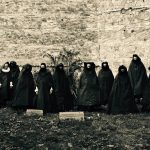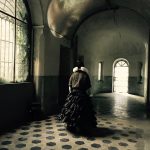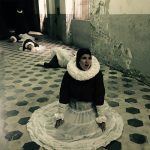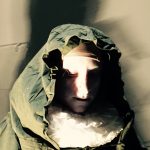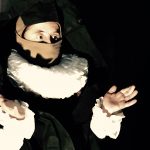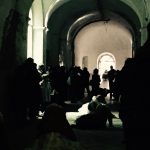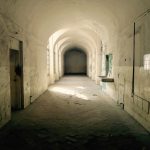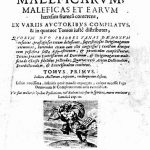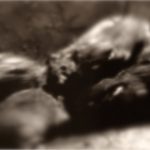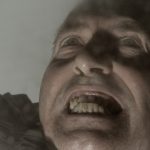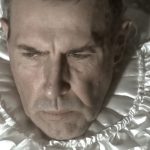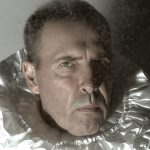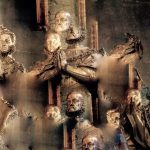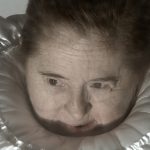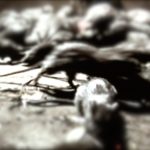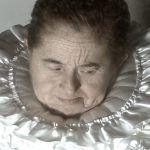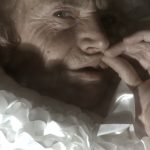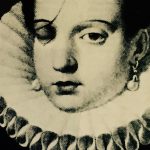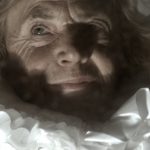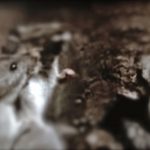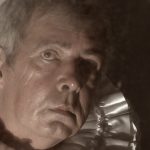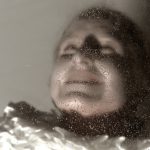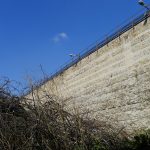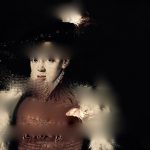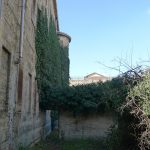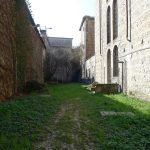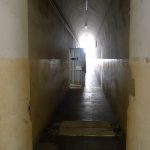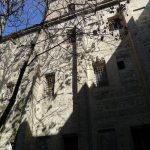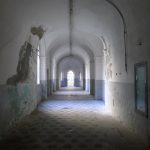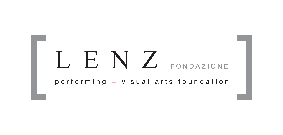
AUTODAFE
L’auto-da-fé, o car of faith o general speech, it was a public ceremony, above all part of the tradition of the Spanish Inquisition, in which it was performed, before the people, the penance or sentence decreed by the Inquisition. The act of faith was the most impressive legal ceremonial developed and used by the Inquisition.
Auto-da-fé di Lenz, new production commissioned by the Verdi Festival 2016, inspired by the great scene of the central finale of Don Carlo, culmination of the political conflict between the libertarian instances of Flanders and the royal authority. Auto-da-fé, site specific installation, performance and sound installation, set in the Napoleonic Wing of the former San Francesco prison in Parma, reworks in a new and original way the scene of the public ceremony of the Spanish Inquisition which sees the heretics condemned to death parade, that Verdi wanted at the center of the opera and in the background of which he highlights the public clash between Philip II and his son Carlo.
Setting dramaturgical and performative sequences, sound and visual installations in spaces that are still empty but full of signs of past functions mean highlighting the historical and social importance, link between the past, present and future, urban transformation works in progress, cultural and civil.
The gardens, the corridors, the rooms of the prison of the Napoleonic part resound with echoes of tears, of shouts, of prayers and guilt in strong relevance to the choral lament that accompanies the auto-da-fé ceremony.
The temporary installation in the spaces that are still empty and to be renovated will bring back, through an artistic function, the historical and social memory of these environments of pain and suffering to contemporary experience. At the same time, with the inclusion in a thematic context such as Don Carlo, the drama of the melodramatic sequence examined can be experienced firsthand by the participating audience.
“NATURE AND LOVE WILL BE SILENT IN ME? EVERYTHING MUST BE SILENT TO EXALT THE FAITH"
In the great scene of the duet between Philip II, one of the most complex figures in Verdi's work, and the monumental blind Grand Inquisitor the reasons of the Church prevail over the reason of state: the empathy of the anticlerical Verdi during the composition of this duet is so intense as to create one of the highest dramatic scenes in the entire history of Opera. Scene perhaps designed for his King Lear, never written but always loved, so precise in its dramaturgical and musical character that it rises above the historical context of “Don Carlos”. Verdi succeeds, through music and dramaturgy to make the protagonists of this duet equal to the great Shakespearean figures, just like Lear. Just as the moor and the storm dressed the old betrayed King, the Autodafé represented in the Cathedral square of Valladolid becomes the architecture of the clash of powers in the field. The dynamics of the duet, the passing choirs, the voice from heaven makes the scenic-musical movement unique, a disruptive force that tends to dilate the time that the writing allocates to this scene. It is on this sensation of space-time explosion that our act of faith is born: a former Napoleonic prison as a royal theater for the Choir, King and Grand Inquisitor, heretics, Elizabeth, Don Carlo and Rodrigo.
Inquisition comes from the Latin verb to inquire, which means to investigate, to investigate, finally search. We looked for a place that could be imbued with history and human suffering, voices and moans penetrated the walls and resounded like echoes, suitable for the multiplication of fragments sung as vocal returns from the entire work, of choirs sung by choristers imprisoned in cells, visited by itinerant spectators as people of a modern auto-da-fé, acted by actors' bodies uttering tricks for confessions to be extorted, mirrored by an imagoturgy that, like in a crystal ball, could bring together the present and the past as in a garden of laments with, superimposed, a Garden of Delights.
To research, Therefore, in this "parallel" dimension of the Verdi sequence its contemporary refraction, a progressive spatial expansion, storm, chromatic and musical.
Investigating the centuries-old history of the Inquisition, dramaturgical research has redefined new visual paths, compositional and, naturally, musical, discovering new sound textures, new scenic writings, welcoming into the excavation, deep, every artistic impulse deriving from the work itself, full of big questions, and every visual stimulus from the historical record of its terrifying contexts.
The Inquisition tribunal conducted investigations to ascertain the heresy and attempted it by every means, to convince the alleged heretic to recant. At the beginning, investigations were carried out against those who had distanced themselves from the Catholic faith, then they began to associate them with witchcraft, to witches, and by preaching, we moved on to persecution, with processes, torture, hangings and sentences at the stake, against all deviants, those who are different and above all against women, considered inferior creatures, fearsome, ally with the devil, liars, with insatiable sexual appetites.
In the XX canto of Hell, in the fourth bedlam of the eighth circle:
“See the sad ones who left the needle, the shuttle and the spindle, ndivine faeces;/I will make a mallet out of grass and into an image.
Dante also placed the sorceresses, the damned females who, instead of dedicating themselves to the spindle and the plume they abandoned the feminine exercises of sewing, of weaving and spinning to make magic with herbal juices and wax images, in which to make pins.
AUTODAFE
Installation and Direction | Maria Federica Masters
Imagoturgy | Francesco Pititto
Sound design | Andrew Azzali
Con | Dominic Mento basso; Ars Canto Youth Voices Choir directed by Gabriella Corsaro: Elena Alfieri, Jacopo Antonaci, Eugenio De Giacomi, Guido Larghi, Gioele Malvica, John Pelosi, James Rastelli, Michelangelo Turchi Sassi; performer: Valentina Barbarini, Walter Bastiani, Paolo Maccini, Delfina Riviera, Sandra Soncini, Carlotta Spaggiari, Barbara Voghera; and Lara Bonvini, Marco Cavellini, Clare Garzo, Federica Goni, Silvia Settimj
Production | Lenz Foundation
In collaboration with | Royal Theatre, Festival Value, Conservatory A. Boito of Parma, Ars Canto
Commission of the Verdi Festival world premiere
– www.ilgiornaledellamusica.it
Alessandro Rigolli
(…) On the other hand, dramaturgical investigations such as the intense and alienating “Autodafé”, site specific installation that Lenz Fondazione created for the Verdi Festival 2016. Inspired by the third act of Verdi's "Don Carlo"., the installation was set up for the first time on 15 October in the ancient Napoleonic prison of San Francesco with the direction, site specific installation, the costumes and plastic elements by Maria Federica Maestri, the dramaturgy by Francesco Pititto and the sound design by Andrea Azzali. A representative dimension that aimed to rework the scene in which the heretics condemned to death parade, that Verdi placed in the background of his opera, centered on the public clash between Philip II and his son Charles. All distributed among the corridors, the rooms and courtyard of the ancient Parma prison, where the characters - actors and singers - moved between walls made heavy by a dramatic story, animated by projections of deformed faces, and cells that evoke a timeless pain. In this environment the audience moved freely, among the rites of the Inquisition, made abstract and at the same time looming by the stage action, they mixed with fragments of Verdi's opera, in an original blend full of meaning. (…)
SEE THE SHAPES OF SOUND
Saturday 15 October 2016 | ore 20.00
Auditorium of the House of Music
Piazzale San Francesco 1, Parma
Free admission
On the occasion of the debut of Autodafé, a meeting to delve deeper into the themes linked to the notion of vision starting from the design of a site-specific environment.
Meeting coordinated by Enrico Pitozzi, Professor of Forms of the Multimedia Scene at the University of Bologna
With the participation of:
Vincenza Di Vita | University of Messina
Cristina Grazioli | University of Padua
Maria Federica Masters | Lenz Foundation
Francesco Pititto | Lenz Foundation







